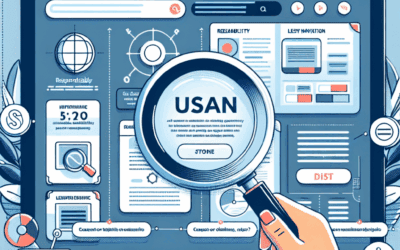In the fast-paced digital world, the design of your website is often the first impression potential customers will have of your brand. An effective web design fosters a seamless user experience (UX) that not only captures attention but also keeps visitors engaged. This article explores how to create a seamless UX with effective web design strategies, ensuring that your website stands out in a crowded marketplace.
Understanding User Experience (UX) in Web Design
User experience (UX) encompasses every aspect of the end-user’s interaction with a company, its services, and its products. It is a multi-dimensional approach that considers usability, accessibility, and the overall aesthetic appeal of a website. Understanding UX is crucial for developing a site that not only looks good but also functions effectively and provides genuine value to users.
The Importance of Effective Web Design
The website is often one of the primary touchpoints between a business and its customers. Effective web design is important for several reasons:
- First Impressions Matter: Users form an opinion about your business within milliseconds of viewing your site.
- Enhanced Engagement: A well-designed site encourages users to explore your content, leading to improved engagement rates.
- Boosted Conversion Rates: Streamlined UX elements increase the likelihood of conversions, whether it’s making a purchase or signing up for a newsletter.
- Improved SEO: Effective web design helps improve your site’s SEO, making it easier for potential customers to find you online.
Key Elements of Effective Web Design for a Seamless UX
1. Responsive Design
Responsive web design ensures that your website looks great on all devices, from desktops to smartphones. With mobile internet usage consistently increasing, a responsive design is essential for reaching your audience effectively. A responsive layout adjusts to different screen sizes and orientations, providing a seamless browsing experience that encourages users to stay longer on your site.
2. Intuitive Navigation
A clear and intuitive navigation structure is vital for guiding users through your website. Visitors should be able to find what they’re looking for within three clicks. Use a clean layout with clearly labeled categories and subcategories. Additionally, consider implementing a search feature to help users quickly locate specific content.
3. Visual Hierarchy
Effective web design employs a visual hierarchy to guide users through your content. Use size, color, and layout strategically to highlight key information and calls-to-action (CTAs). For instance, larger fonts can draw attention to headlines, while contrasting colors can emphasize CTAs. This technique helps users scan your site efficiently, ensuring they don’t miss vital information.
4. Consistent Branding
Maintaining consistent branding across your website instills trust and fosters brand recognition. Use a cohesive color palette, typography, and imagery that reflects your brand identity. Consistency in design enhances professionalism, making users more likely to engage with your brand further.
5. Fast Loading Times
Website speed is a crucial element of UX. Studies show that users are likely to abandon a site if it takes longer than three seconds to load. Optimize your images, minimize HTTP requests, and consider using content delivery networks (CDNs) to improve loading times. A fast-loading website keeps users from getting frustrated and encourages them to explore your site further.
6. Accessible Design
Web accessibility is about making your website usable for everyone, including individuals with disabilities. Implement features such as alt text for images, appropriate color contrasts, and keyboard navigation to ensure your site is accessible. An inclusive website improves user experience and expands your audience reach.
7. Engaging Content
Content is a significant part of the user experience. High-quality, relevant content keeps users engaged and encourages them to explore more pages. Utilize various content formats such as videos, infographics, and blogs to cater to different preferences. Additionally, ensure your text is easy to read, concise, and well-structured.
Testing and Iteration for Continuous Improvement
Creating a seamless user experience is an ongoing process. Conduct regular usability testing to gather data on how users interact with your site. Use tools like A/B testing to compare different layouts or designs. Collecting user feedback allows you to identify pain points and areas for improvement, enabling you to continuously enhance the UX of your website.
Conclusion: Investing in Effective Web Design for Lasting Success
Effective web design plays a pivotal role in creating a seamless user experience. By focusing on responsive design, intuitive navigation, visual hierarchy, consistent branding, and accessibility, you can build an engaging website that attracts and retains users. Remember that the digital landscape is ever-evolving; therefore, continuously testing and iterating on your design will keep your website dynamic and user-friendly. Investing in effective web design not only enhances user experience but also drives engagement and conversions, ultimately contributing to your business’s long-term success.
USA Marketing Pros is your reliable partner for innovative web design, SEO, and digital marketing services. Based in Arlington, VA, we proudly serve businesses across Northern Virginia and the broader Washington, DC area. Reach out to us today to see how we can help your business grow at (202) 888-5895 or visit us at 701 12th St S, Arlington, VA 22202.
Need professional web design? Discover our Web Design Service
View all our Digital Marketing Services
Schedule a Web Design Strategy Call




0 Comments